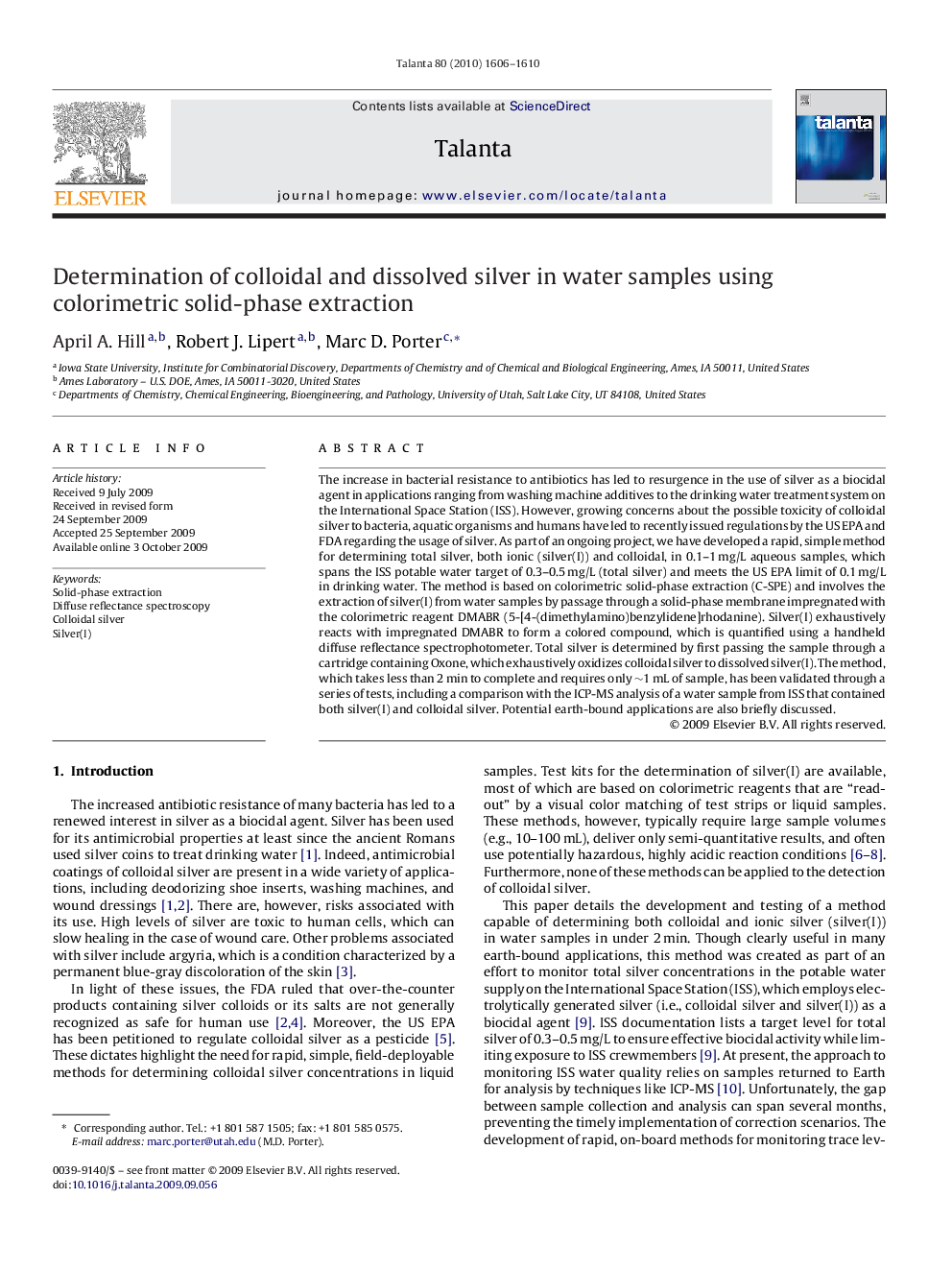| Article ID | Journal | Published Year | Pages | File Type |
|---|---|---|---|---|
| 1242954 | Talanta | 2010 | 5 Pages |
The increase in bacterial resistance to antibiotics has led to resurgence in the use of silver as a biocidal agent in applications ranging from washing machine additives to the drinking water treatment system on the International Space Station (ISS). However, growing concerns about the possible toxicity of colloidal silver to bacteria, aquatic organisms and humans have led to recently issued regulations by the US EPA and FDA regarding the usage of silver. As part of an ongoing project, we have developed a rapid, simple method for determining total silver, both ionic (silver(I)) and colloidal, in 0.1–1 mg/L aqueous samples, which spans the ISS potable water target of 0.3–0.5 mg/L (total silver) and meets the US EPA limit of 0.1 mg/L in drinking water. The method is based on colorimetric solid-phase extraction (C-SPE) and involves the extraction of silver(I) from water samples by passage through a solid-phase membrane impregnated with the colorimetric reagent DMABR (5-[4-(dimethylamino)benzylidene]rhodanine). Silver(I) exhaustively reacts with impregnated DMABR to form a colored compound, which is quantified using a handheld diffuse reflectance spectrophotometer. Total silver is determined by first passing the sample through a cartridge containing Oxone, which exhaustively oxidizes colloidal silver to dissolved silver(I). The method, which takes less than 2 min to complete and requires only ∼1 mL of sample, has been validated through a series of tests, including a comparison with the ICP-MS analysis of a water sample from ISS that contained both silver(I) and colloidal silver. Potential earth-bound applications are also briefly discussed.
